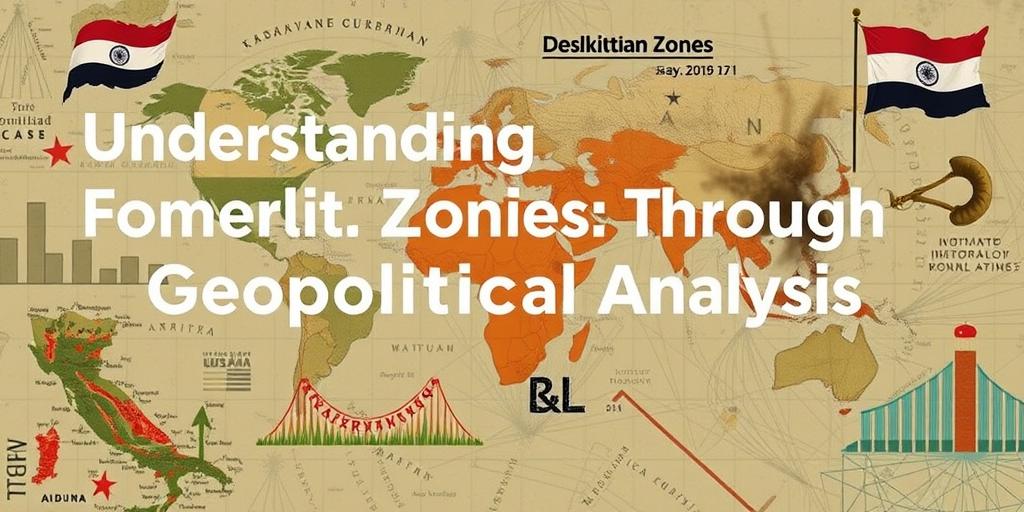Understanding Conflict Zones Through Geopolitical Analysis
Conflict zones are complex and multifaceted areas shaped by a variety of interconnected factors. Geopolitical analysis offers a framework for understanding these zones by examining the interplay of geography, politics, economics, and social dynamics. This approach helps in identifying the root causes of conflict, the key actors involved, and the potential pathways to resolution. In this post, we'll delve into the key aspects of analyzing conflict zones through a geopolitical lens.
Defining Conflict Zones
Conflict zones are geographical areas characterized by armed conflict, political instability, and often, humanitarian crises. These zones are not limited to interstate wars but include civil wars, insurgencies, and other forms of organized violence. Understanding the specific characteristics of each conflict zone requires a deep dive into its unique context.
Key Elements of Geopolitical Analysis
Geographic Factors: Geography plays a crucial role in shaping conflict dynamics. Natural resources, strategic location, and physical terrain can all influence the outbreak and progression of conflict. For example, regions rich in oil, minerals, or water resources often become flashpoints due to competition and control.
Political Systems and Governance: The nature of political systems and governance structures significantly impacts stability. Weak governance, corruption, and lack of representation can fuel grievances and lead to conflict. Authoritarian regimes, in particular, often suppress dissent, leading to violent resistance.
Economic Factors: Economic disparities and inequalities are major drivers of conflict. Poverty, unemployment, and lack of economic opportunities can create fertile ground for recruitment into armed groups. Conversely, economic development can serve as a stabilizing force by providing alternatives to violence.
Social and Cultural Dynamics: Social divisions along ethnic, religious, or tribal lines can exacerbate tensions and lead to conflict. Cultural narratives and historical grievances also play a significant role in shaping identities and fueling animosities. Understanding these dynamics is crucial for effective conflict resolution.
Case Studies
The Middle East: The Middle East is a region rife with complex conflicts driven by a combination of geographic, political, economic, and social factors. Control over oil resources, historical grievances, and religious divisions have fueled numerous conflicts, including the Israeli-Palestinian conflict, the Syrian civil war, and the wars in Iraq and Yemen.
Sub-Saharan Africa: Sub-Saharan Africa faces numerous challenges, including weak governance, poverty, and ethnic divisions. These factors have contributed to conflicts in countries such as the Democratic Republic of Congo, South Sudan, and Nigeria. Climate change and resource scarcity are also emerging as major drivers of conflict in the region.
Tools for Geopolitical Analysis
GIS (Geographic Information Systems): GIS technology is used to map and analyze spatial data related to conflict zones. This includes mapping natural resources, population distribution, infrastructure, and conflict events. GIS helps in visualizing patterns and identifying areas at high risk of conflict.
Political Risk Assessment: Political risk assessment involves evaluating the political and security risks associated with operating in a particular region. This includes assessing the stability of the government, the level of corruption, and the risk of political violence.
Social Network Analysis: Social network analysis is used to map and analyze the relationships between different actors in a conflict zone. This helps in identifying key influencers, power brokers, and potential spoilers. Social network analysis can also be used to track the flow of information and resources within a conflict zone.
Implications for Conflict Resolution
Geopolitical analysis provides valuable insights for conflict resolution efforts. By understanding the root causes of conflict and the key actors involved, policymakers and peacebuilders can develop more effective strategies for preventing and resolving conflicts. This includes addressing economic inequalities, promoting good governance, and fostering social cohesion.
Conclusion
Understanding conflict zones through geopolitical analysis is essential for developing effective strategies for conflict prevention, management, and resolution. By examining the interplay of geographic, political, economic, and social factors, we can gain a deeper understanding of the complex dynamics that shape these zones and work towards building a more peaceful and stable world.









